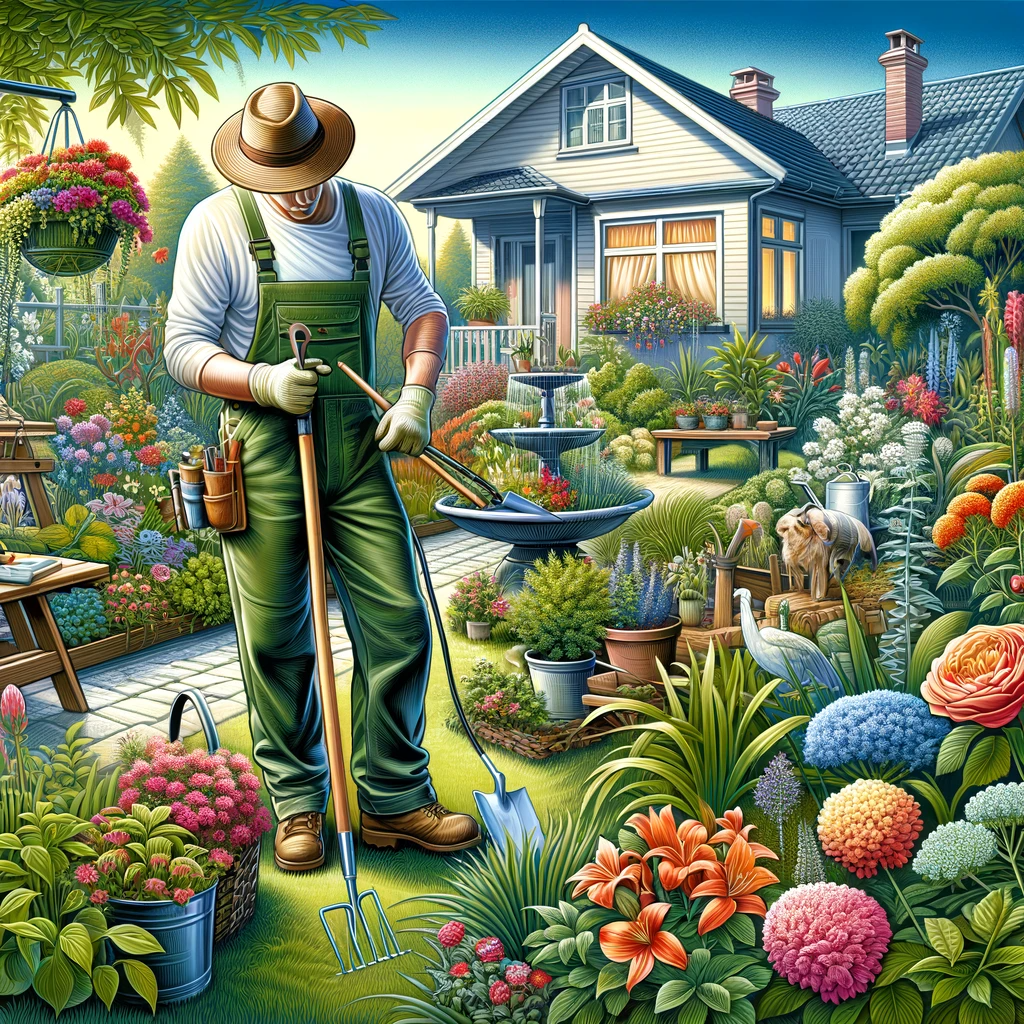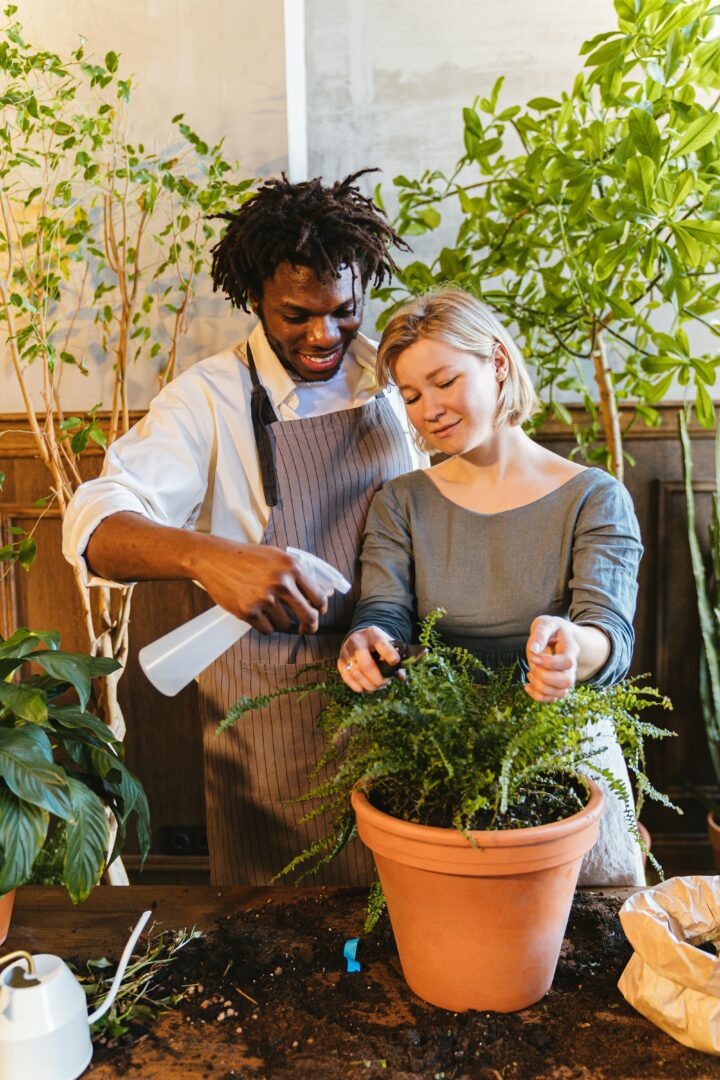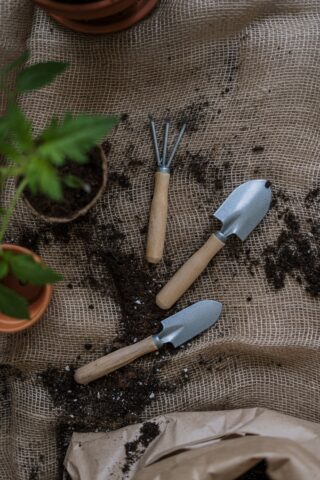Importance of gardening for first-time homeowners
Gardening is a delightful and rewarding activity that holds immense importance for first-time homeowners. Not only does it enhance the aesthetic appeal of your property, but it also offers numerous physical and mental health benefits. Whether you have a sprawling backyard or a cozy balcony, cultivating a garden is a fantastic way to connect with nature and create a tranquil oasis right at your doorstep.
For those new to the world of gardening, the thought of nurturing plants might seem daunting. However, with a little guidance and the right tools, even the most novice gardener can experience the joy of watching their green thumb flourish. So, let’s explore the significance of gardening for first-time homeowners and discover how it can transform your living space into a vibrant haven of natural beauty.
One of the key advantages of gardening is the opportunity it provides for homeowners to escape the hustle and bustle of everyday life. In our fast-paced world, finding moments of serenity can be challenging. However, by dedicating time to tend to your garden, you can immerse yourself in the wonders of nature and find solace in the simple act of nurturing plants. The process of planting seeds, watching them grow, and witnessing the vibrant colors of blossoming flowers can be incredibly therapeutic, helping to alleviate stress and promote a sense of calm.
Furthermore, gardening offers a myriad of physical health benefits. Engaging in activities such as digging, planting, and weeding provides an excellent form of exercise, contributing to improved cardiovascular health, increased strength, and enhanced flexibility. Additionally, spending time outdoors exposes you to sunlight, which is a natural source of vitamin D. This essential vitamin plays a crucial role in supporting bone health, boosting the immune system, and improving overall well-being.
Apart from the personal benefits, gardening also adds immense value to your home. By cultivating a beautiful garden, you can elevate the curb appeal of your property and create an inviting atmosphere for both yourself and visitors. A well-maintained garden can make a lasting impression and significantly increase the market value of your home. So, if you ever decide to sell your property in the future, a flourishing garden will undoubtedly be an eye-catching feature that sets your home apart from the rest.
Additionally, gardening can help you save money on produce. With the rising cost of groceries, growing your own fruits, vegetables, and herbs can be an economical alternative. Not only does this provide access to fresh and organic produce, but it also eliminates the need to rely entirely on store-bought items. Imagine stepping out into your backyard and plucking ripe tomatoes or fragrant basil leaves, knowing that they were grown with care and free from harmful pesticides. It’s a gratifying experience that allows you to savor the flavors of homegrown goodness while reducing your grocery expenses.
In conclusion, gardening offers a multitude of benefits for first-time homeowners. From the therapeutic qualities that promote mental well-being to the physical advantages of exercise and exposure to sunlight, cultivating a garden provides a sanctuary of tranquility right outside your door. Moreover, the aesthetic appeal and added value it brings to your home, combined with the potential cost savings on produce, make gardening an endeavor worth pursuing. So, whether you have a green thumb or are just beginning to explore the world of gardening, dive in and let nature’s beauty blossom in your own backyard.
To learn more about gardening tips for beginners, container gardening for beginners, or indoor gardening for beginners, feel free to check out our comprehensive guides on these topics. They provide invaluable insights and practical advice for those embarking on their gardening journey. Additionally, if you’re interested in learning how to start a garden from scratch or need recommendations for the best gardening tools for beginners, our guides have got you covered. Happy gardening!
Benefits of Gardening for Beginners
Gardening is not just a hobby; it is a transformative experience that offers an array of benefits for beginners. Whether you have recently become a proud homeowner or are simply looking to embark on a new journey, cultivating a garden can be a fulfilling and rewarding endeavor. Let’s explore some of the remarkable advantages that gardening has in store for those who are just starting out.
Physical and Mental Health Benefits
Engaging in gardening activities can have a profound impact on both your physical and mental well-being. Physically, gardening provides an opportunity to get moving and stay active. As you dig, plant, and tend to your garden, you are unwittingly engaging in a low-impact workout that can help to improve your strength, flexibility, and endurance. The repetitive motions involved in gardening, such as raking and weeding, can also contribute to increased joint mobility and improved dexterity.
Moreover, spending time in nature has been proven to have a positive effect on mental health. Gardening allows you to immerse yourself in the tranquility and beauty of the natural world, providing a much-needed respite from the hustle and bustle of daily life. The act of nurturing and caring for plants can be incredibly therapeutic, reducing stress, anxiety, and even symptoms of depression. It offers a sense of accomplishment and pride as you witness the growth and blossoming of your own little sanctuary.
Beautifying Your Home

One of the most visually appealing benefits of gardening is the ability to beautify your home. Whether you have a sprawling backyard or a cozy balcony, adding a touch of greenery can instantly transform your living space into a tranquil oasis. With careful planning and selection, you can create a vibrant tapestry of colors, textures, and scents that will captivate the senses and evoke a sense of serenity.
By incorporating a variety of plants, flowers, and even trees, you can enhance your home’s curb appeal and create a welcoming environment for both yourself and your guests. Imagine the joy of stepping outside to be greeted by a riot of blooming flowers or the soothing rustle of leaves from your very own garden. Gardening allows you to craft an outdoor haven that is not only visually stunning but also a reflection of your unique style and personality.
Saving Money on Produce
In addition to the physical and aesthetic benefits, gardening can also help you save money on produce. With the rising cost of groceries, growing your own fruits, vegetables, and herbs can significantly reduce your monthly expenses. By cultivating a small vegetable patch or herb garden, you can enjoy a bountiful harvest of fresh, organic produce right at your doorstep.
Imagine the satisfaction of plucking juicy tomatoes, crisp lettuce, or fragrant herbs straight from your garden and incorporating them into your meals. Not only will you have the pleasure of savoring the incredible flavors of homegrown food, but you will also have the peace of mind knowing that your produce is free from harmful pesticides and chemicals. Gardening empowers you to take control of your food source, fostering a deeper connection to the earth and the nourishment it provides.
In conclusion, the benefits of gardening for beginners are numerous and diverse. From the physical and mental health advantages to the aesthetic appeal and financial savings, cultivating a garden can be a transformative journey that enriches your life in countless ways. So, grab your gardening tools and embark on this adventure of growth and renewal. Your mind, body, and home will thank you.
If you are interested in learning more about gardening tips for beginners, container gardening, or indoor gardening, be sure to check out this comprehensive guide. It provides valuable insights and practical advice to help you get started on your gardening journey.
Basic Gardening Tools and Supplies
When venturing into the world of gardening, it’s essential for beginners to equip themselves with the right tools and supplies. Just like a painter needs their brushes and a chef needs their knives, a gardener relies on a set of tools that will help them cultivate a flourishing oasis. By having the proper tools at your disposal, you’ll be well-prepared to embark on your horticultural journey.
Essential Gardening Tools
To get started, essential gardening tools are a must. These tools will become your trusty companions as you dig, prune, and nurture your plants. Here are some must-haves:
- Hand Trowel: This small, handheld tool is perfect for digging small holes, transplanting seedlings, and removing weeds. Its compact size allows for precise control, making it an invaluable asset for any gardener.
- Pruning Shears: As your plants grow, they’ll require occasional pruning to maintain their health and shape. Pruning shears, also known as secateurs, enable you to trim branches and stems with precision and ease.
- Garden Gloves: Protecting your hands is crucial when working in the garden. Garden gloves shield your hands from thorns, prickly plants, and rough surfaces, ensuring your gardening experience remains comfortable and injury-free.
- Garden Fork: A garden fork is a versatile tool that comes in handy for loosening compacted soil, turning compost, and removing stubborn weeds. Its sturdy tines make light work of heavy-duty tasks, allowing you to effortlessly aerate your soil.
- Rake: Whether you’re clearing leaves, leveling soil, or spreading mulch, a rake is an indispensable tool for maintaining a tidy garden. Its long handle and teeth-like design make it efficient at gathering debris or creating smooth surfaces.
Soil and Fertilizers
An essential aspect of successful gardening lies in providing your plants with the right nutrients. Soil forms the foundation for healthy growth, while fertilizers supplement the soil’s natural composition, ensuring your plants receive a balanced diet. When selecting soil and fertilizers, consider the specific needs of your plants. Some may thrive in loamy soil, while others may require a more acidic or well-draining substrate.
Seeds and Seedlings
The journey of a garden often begins with seeds and seedlings. Whether you’re starting from scratch or seeking to expand an existing garden, these tiny powerhouses hold the promise of new life. Seeds allow you to witness the miracle of growth firsthand, while seedlings provide a head start by allowing you to skip the germination process. Choose varieties that are suited to your climate and gardening goals, and watch as they sprout into vibrant green life.
Watering Equipment
Just like humans, plants rely on water for survival. Therefore, having the right watering equipment is essential for maintaining a healthy garden. A watering can is an indispensable tool for gently nourishing delicate seedlings or providing a targeted drink to thirsty plants. For larger garden areas, a garden hose with an adjustable nozzle allows for efficient and controlled watering. Alternatively, drip irrigation systems can be installed to automate the process and conserve water.
Remember, having the proper tools and supplies is the first step towards a thriving garden. By investing in these essentials, you’ll be well-equipped to tend to your plants with care and precision. So grab your trowel, put on your gloves, and let the gardening adventure begin!
For more detailed information on gardening tools for beginners, check out this comprehensive guide.
Choosing the Right Plants for Beginners
When it comes to gardening, choosing the right plants is crucial, especially for beginners. After all, the success of your garden depends on the plants you select. But fear not, dear readers, for we are here to guide you through this important decision-making process.
Low-Maintenance Plants
For those just starting their gardening journey, low-maintenance plants are a blessing. These are the type of plants that require minimal care and attention, making them perfect for busy individuals or those who are new to the world of gardening. Resilient and hardy, these plants can withstand a bit of neglect and still thrive.
Examples of low-maintenance plants include succulents, such as aloe vera or jade plants, which are known for their ability to store water in their leaves. These plants require infrequent watering and can tolerate a variety of lighting conditions. Another fantastic option is the snake plant, also known as Sansevieria, which is known for its air-purifying qualities and ability to thrive even in low-light environments.
Beginner-Friendly Vegetables and Herbs
For those with a taste for fresh produce, growing your own vegetables and herbs is a rewarding experience. Not only does it provide a sense of accomplishment, but it also allows you to enjoy the fruits (or in this case, vegetables and herbs) of your labor. Beginner-friendly vegetables and herbs are those that are relatively easy to grow and maintain, even for those with limited gardening experience.
Lettuce is an excellent choice for beginners. It grows quickly and can be harvested multiple times throughout the growing season. Tomatoes are another popular option, as they are versatile and can be grown in containers or in the ground. Basil, rosemary, and thyme are some beginner-friendly herbs that not only add flavor to your dishes but also add beauty to your garden with their lovely foliage.
Indoor Plants for Beginners
If you’re a first-time homeowner with limited outdoor space or perhaps you simply prefer the idea of bringing nature indoors, indoor plants are the perfect choice for you. These plants thrive in indoor environments and can significantly enhance the aesthetic appeal of your home while also providing numerous health benefits.
One of the most beloved indoor plants is the peace lily. With its elegant white flowers and glossy dark-green leaves, it adds a touch of elegance to any room. Another popular choice is the spider plant, which features long, arching leaves and produces small plantlets that can be propagated into new plants. For those seeking a pop of color, the vibrant African violet is an excellent option, as it blooms profusely with delicate purple or pink flowers.
Remember, dear readers, the key to successful gardening lies in choosing the right plants for your skill level and environment. By opting for low-maintenance plants, beginner-friendly vegetables and herbs, or indoor plants, you’ll be well on your way to cultivating a thriving garden. And don’t forget to check out our gardening tips for beginners for more helpful advice on starting your gardening journey!
Getting Started with Gardening
Once you’ve assessed your space and gathered the necessary tools and supplies, it’s time to roll up your sleeves and dive into the exciting world of gardening. This section will guide you through the essential steps involved in getting started with your very own garden.
Assessing Your Space
Before you start planting, it’s crucial to assess your space and determine the best location for your garden. Consider the amount of sunlight your garden will receive throughout the day. Most plants thrive in adequate sunlight, so choose a spot that gets at least six hours of direct sunlight. If you have limited outdoor space, don’t worry! Container gardening or indoor gardening can be excellent alternatives that allow you to cultivate a vibrant garden in smaller areas.
Preparing the Soil
The foundation of a successful garden lies in the quality of the soil. Begin by removing any rocks, weeds, or debris from the area you’ve chosen for your garden. Then, loosen the soil using a garden fork or a tiller to ensure proper drainage and root penetration. If the soil is compacted or lacking in nutrients, consider enriching it with organic matter such as compost or peat moss. These amendments will improve the soil structure and provide essential nutrients for your plants to thrive.
Planting and Watering
Now that your soil is prepared, it’s time to start planting! Whether you’re starting from seeds or using seedlings, follow the instructions on the seed packets or plant tags for proper planting depth and spacing. Make sure to water your plants immediately after planting to help them settle into their new home.
When it comes to watering, it’s essential to strike a balance. Too much water can lead to root rot, while too little water can cause your plants to wither. Monitor the moisture levels in your soil by checking the top inch or two with your finger. If it feels dry, it’s time to water. Provide a thorough soaking to ensure the water reaches the plant’s roots.
Caring for Your Plants
Once your plants are in the ground, they’ll need some TLC to thrive. Regular maintenance tasks include weeding, pruning, and fertilizing. Weeds compete with your plants for nutrients and water, so it’s crucial to keep them at bay. Regularly inspect your garden for any unwanted intruders and remove them promptly.
Pruning helps promote healthy growth and shape your plants. Trim dead or damaged branches to encourage new growth and maintain an attractive appearance. Additionally, consider adding a layer of mulch around your plants to conserve moisture, suppress weeds, and regulate soil temperature.
Fertilizing is another essential aspect of caring for your plants. While enriched soil provides a good foundation, supplementing with organic fertilizers can give your plants an extra boost. Follow the instructions on the fertilizer packaging to ensure you’re applying the correct amount.
By following these steps, you’ll be well on your way to creating a flourishing garden. Remember, gardening is a journey of learning and experimentation. Don’t be afraid to make mistakes and adapt your approach as you gain experience. For more gardening tips for beginners, check out Dwelly’s comprehensive guides on container gardening for beginners and indoor gardening for beginners. Happy gardening!
Troubleshooting Common Gardening Problems
As with any new endeavor, gardening can have its fair share of challenges. But fear not, for with a little knowledge and preparation, you can overcome these hurdles and achieve a flourishing garden. In this section, we will explore some common gardening problems and provide you with expert tips to tackle them head-on.
Pests and Diseases
One of the most frustrating issues that gardeners face is the presence of pests and diseases. These unwanted visitors can wreak havoc on your plants, causing stunted growth and even death if left unchecked. But fret not, for there are several measures you can take to protect your garden.
1. Identify the enemy: The first step in combating pests and diseases is to identify the culprit. Keep a keen eye on your plants and look out for any signs of damage or unusual growth patterns. Consult gardening resources or seek advice from experienced gardeners to help you pinpoint the problem.
2. Implement preventive measures: Prevention is key when it comes to pests and diseases. Ensure that your garden is well-maintained and free from debris, as these can serve as breeding grounds for harmful insects and fungi. Regularly inspect your plants for any signs of trouble and promptly remove any affected foliage to prevent the spread of diseases.
3. Natural remedies: In many cases, natural remedies can be just as effective as chemical pesticides. Consider introducing beneficial insects to your garden, such as ladybugs and lacewings, which can help control aphids and other pests. Some plants, like marigolds and garlic, also possess natural repellent properties that can deter unwanted visitors.
4. Organic pesticides: If the infestation persists and natural remedies are not sufficient, you may need to resort to organic pesticides. These environmentally-friendly alternatives can effectively target specific pests without harming beneficial insects or pollinators. Just be sure to follow the instructions carefully and use them sparingly.
Weeds
Weeds are the bane of every gardener’s existence. They compete with your plants for nutrients, water, and sunlight, and can quickly take over if left unattended. But fear not, for there are ways to keep these pesky invaders at bay.
1. Mulching: Mulching is a technique that involves placing a layer of organic material, such as wood chips or straw, around your plants. Not only does it help conserve moisture and suppress weed growth, but it also adds nutrients to the soil as it breaks down. Apply a thick layer of mulch, around 2-4 inches, to smother the weeds and keep them from germinating.
2. Hand pulling: For smaller weed infestations, hand pulling can be an effective and satisfying method of removal. Make sure to pull the weeds from the root, ensuring that no part of the plant is left behind to regrow. This method is best done after rainfall or watering when the soil is moist, making it easier to extract the entire weed.
3. Weed barriers: Weed barriers, such as landscape fabric or cardboard, can be laid down before planting to prevent weeds from sprouting. Cut holes in the barrier to accommodate your plants, and cover it with a layer of mulch. This will create a physical barrier that inhibits weed growth while still allowing your plants to thrive.
4. Herbicides: In extreme cases where weeds have taken over, herbicides can be used as a last resort. However, it is essential to exercise caution when using chemical weed killers, as they can harm desirable plants if not applied correctly. Always follow the instructions provided and opt for selective herbicides that target specific weeds while leaving your plants unharmed.
Over or Underwatering
Watering is a fundamental aspect of gardening, but finding the right balance can be a challenge. Over or underwatering can lead to stressed plants, root rot, and diminished yields. Here’s how you can avoid these common pitfalls.
1. Observe your plants: Pay close attention to your plants and learn to read their signals. Wilting, yellowing leaves, and stunted growth can indicate that your plants are not receiving enough water, while yellowing or drooping leaves may be a sign of overwatering. Adjust your watering routine accordingly to meet the specific needs of your plants.
2. Water deeply and infrequently: Instead of frequent shallow watering, aim for deep, thorough watering sessions. This encourages your plants’ roots to grow deeper into the soil in search of water, making them more resilient to drought conditions. Watering deeply also helps flush out salts and prevents the build-up of harmful pathogens.
3. Proper drainage: Ensure that your garden has proper drainage to prevent waterlogging. If your soil is heavy and retains water, consider incorporating organic matter, such as compost or well-rotted manure, to improve its structure. Additionally, avoid watering in the evening to minimize the risk of fungal diseases that thrive in moist conditions.
4. Use self-watering systems: For those who may be prone to forgetting to water their plants or are frequently away from home, self-watering systems can be a game-changer. These innovative solutions provide a consistent water supply to your plants, ensuring they receive the moisture they need without the risk of over or underwatering.
By familiarizing yourself with these common gardening problems and employing the appropriate solutions, you will be better equipped to overcome any challenges that arise. Remember, gardening is a journey of continuous learning and experimentation. Embrace the process, and soon you’ll be reaping the rewards of a vibrant and thriving garden.
For more gardening tips and resources, check out our detailed guides on gardening tips for beginners and container gardening for beginners.
Resources for Beginner Gardeners
When embarking on a new gardening journey, it’s essential for beginners to have access to valuable resources that can guide them along the way. Luckily, there is a wealth of information available to help novices blossom into skilled green thumbs. From digital platforms to hands-on workshops, here are some resources that will nurture your gardening ambitions and cultivate your knowledge.
Gardening Websites and Blogs
Knowledge is power, and when it comes to gardening, the internet is a treasure trove of wisdom. Countless gardening websites and blogs offer a wealth of insights, tips, and inspiration for beginners. Whether you’re seeking guidance on how to start a garden from scratch or looking for the best gardening tools for beginners, these digital resources have got you covered.
One such website that caters specifically to new gardeners is Dwelly Homes. Their comprehensive guides cover everything from basic gardening techniques to specialized topics like container gardening for beginners and indoor gardening for beginners. With their expert advice and step-by-step instructions, you’ll be equipped with the knowledge to transform your garden into a flourishing oasis.
Gardening Classes and Workshops
Sometimes, the best way to learn is through hands-on experience. If you prefer a more interactive approach to gardening education, gardening classes and workshops are fantastic resources to explore. These opportunities allow beginners to learn directly from experienced horticulturists, who will guide you through the practical aspects of gardening.
Many local nurseries, community centers, and botanical gardens offer workshops tailored to beginners. These workshops cover a range of topics, such as soil preparation, plant care, and pest management. By participating in these classes, you’ll gain confidence in your gardening skills and have the chance to connect with fellow enthusiasts who share your passion for cultivating the earth.
Community Gardens
Gardening is not only a solitary activity; it can also be a wonderful way to connect with your community. Community gardens provide a unique opportunity for beginners to learn from experienced gardeners while fostering a sense of camaraderie among like-minded individuals.
By joining a community garden, you’ll have access to shared plots of land where you can grow your own plants and vegetables. Not only will you benefit from the collective knowledge of seasoned gardeners, but you’ll also be able to enjoy the social aspect of gardening. Exchanging tips and stories with fellow gardeners can be a genuinely enriching experience, allowing you to forge new friendships and strengthen your green thumb.
In conclusion, as a beginner gardener, it’s crucial to take advantage of the resources available to you. From informative websites and blogs to hands-on classes and community gardens, these valuable tools will help you cultivate your gardening skills and grow your passion for all things green. So don’t hesitate to dig deep and explore the wealth of knowledge waiting to be discovered. Happy gardening!
Internal links: gardening tips for beginners, container gardening for beginners, indoor gardening for beginners, how to start a garden from scratch, gardening tools for beginners
Conclusion
In conclusion, embarking on a gardening journey as a first-time homeowner can be an incredibly rewarding and fulfilling experience. Not only does gardening offer a plethora of physical and mental health benefits, but it also allows you to beautify your home and save money on produce. By equipping yourself with the basic gardening tools and supplies, such as a sturdy spade, a pruning shears, and a garden hose, you’ll be well-prepared to tackle any gardening task that comes your way.
Remember, choosing the right plants for beginners is key to ensuring a successful and enjoyable gardening experience. Opt for low-maintenance plants that require minimal care and attention, like succulents or peace lilies. If you’re interested in growing your own vegetables and herbs, consider beginner-friendly options such as tomatoes, basil, or chives. And if you’re short on outdoor space, don’t worry! You can still indulge your green thumb with indoor plants like snake plants or spider plants.
Getting started with gardening involves assessing your space, preparing the soil, and carefully planting and watering your chosen plants. With proper care and attention, your plants will thrive and bring joy to your home. Remember to regularly tend to your garden by removing pests and weeds, and make sure to strike a balance when it comes to watering—neither over nor under watering.
If you encounter any common gardening problems along the way, such as pests, diseases, or weeds, don’t fret. There are plenty of resources available to help you troubleshoot and overcome these challenges. Check out gardening websites and blogs, like Gardening for Beginners, for expert tips and advice. Consider attending gardening classes or workshops to expand your knowledge and skills. And if you’re looking for a sense of community, community gardens offer a fantastic opportunity to connect with fellow gardening enthusiasts and learn from one another.
In conclusion, gardening is a journey that offers endless possibilities for growth and discovery. Whether you have a sprawling backyard or a cozy apartment balcony, there’s a gardening adventure waiting for you. So grab your gardening tools, get your hands dirty, and watch as your green oasis flourishes. Happy gardening!



